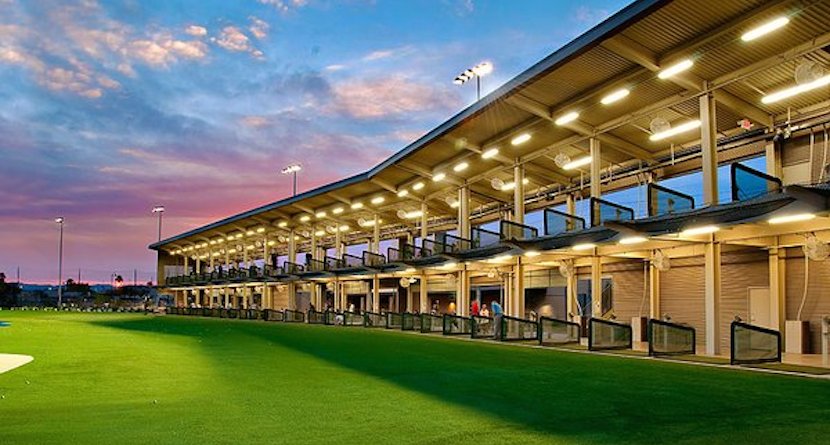For at least the past five years, it seems that there has hardly been a golf industry conference that hasn’t posited some vision of the disrupted and transformed golf facility. Surely you’ve heard the bluster: “Golf as we know it will not exist in 20 years; five years, 30 seconds.”
Many of these prognostications strike me as clearly sensationalistic attempts to sell something without the solid grounding of facts or research. But beyond the hyperbole, our research is showing a steady evolution that has created shifts in the product offering. These refinements point to a positive reconstitution that will preserve the inherent qualities and values of golf, held so dearly by most who play, while also recognizing the contextual realities of a world that, on the surface, isn’t as conducive to a day at the golf course as it did a generation ago.
From an outside-in perspective, we start with the course itself. Tomorrow’s successful golf courses will offer a greater variety of options for play. That means designs that allow flexibility to accommodate the nine-hole round as well as other shorter loops to meet the needs of twilight or sunrise/pre-work golf; to allow juniors and others to sample the product in bite-sized portions. It also means a greater focus on forward tee boxes to accommodate the beginner, the senior, the adaptive golfer or anyone with a slower swing speed.
In our annual Trend Watch study for the American Society of Golf Course Architects, we are seeing these considerations playing a greater importance in the work of those who design and renovate golf courses for a living.
The golf course of tomorrow is also more mindful of sustainability and environmental issues. A significant amount of effort put forth by the USGA has focused on espousing best practices for reducing the required amount of irrigated acreage at golf courses. This in turn, lowers operating costs and addresses water utilization challenges.
Technology is also playing a significant role in helping course superintendents and general managers to make smarter decisions regarding other maintenance issues. Our research has put us in front of innovations that allow course operators to view heat maps that show golfer and golf car traffic patterns, which can lead to the elimination or modification of course features that don’t frequently come into play, also positively impacting maintenance costs.
Our 2019 Trend Watch research showed that superintendents and facility operators found that maintenance costs (water, labor, inputs) were the number one most significant issue impacting their facility’s sustainability and financial health; more so even than competing priorities for customers’ leisure time and the length and difficulty of the golf course.
Our ASGCA work is also showing that range renovations have gone to the top of the list as facilities seek to revive this amenity, often with technology-enabled shot tracking and other gamification elements popularized by the stand-alone golf range entertainment complexes like Topgolf and Drive Shack. High-tech golf carts and an abundance of GPS enabled smart apps are aiding golfers and facility alike in bringing an abundance of information to the fingertips of golfers, be they of the game improvement/analysis genre or simply service elements that facilitate communication with the golf shop or 19th hole.
But it’s important to realize that the course itself is still the valued oasis that our survey and qualitative work consistently show to be the key pay off of the golf experience. As technology and the separation of work life and home life become more clouded, the golf course still serves as the respite for those who want to block out the pervasive 24-7 digital intrusions, present everywhere else… except when that’s not possible.
And therein lies the contrast to the serenity of the course and the pragmatic necessity for the clubhouse to become more of that extension of home and office. Smart clubhouses of tomorrow will include all kinds of digital connectivity. We are seeing a greater adoption of golf simulators and other high tech amenities to create the ultimate man cave or she-shed.
Club Corp rolled out “Touchdown Rooms” that can accommodate small business meetings or serve as a bridge between club and office, complete with basic business amenities akin to what one might find in an airport lounge. Dining options are more casual and health-oriented to reflect today’s values. Fitness centers and social spaces further blur the lines between club and home. The facility of the future recognizes that keeping golfers on property is good for revenue enhancement and improvement of the overall experience. It makes the club less stodgy and more of a comfortable home away from home.
We’ve also seen a trend towards a greater variety of non-golf specific, special interest programming and a focus on family needs. As American Golf CEO Jim Hinckley put it at our Golf, Inc. keynote presentation last month, there is a greater recognition that golf is now just one of many amenities, not necessarily the primary amenity.
In lockstep with this insight is a greater variety of hybrid membership and subscription type offerings. At public access courses, we are seeing more inclusive and flexible access that includes pay by the hole and other yield management options that meet the demand for value, simplicity and efficiency, build an enriching community and provide a “safe haven” for families.




